Sharpening stones are essential tools for refining and maintaining the edges of various implements. They play a crucial role in achieving precision and durability in cutting tools.
1.1 What Are Sharpening Stones?
Sharpening stones are tools used to refine and maintain the edges of various implements. They consist of durable materials like aluminum oxide or silicon carbide‚ which are designed to wear down metal surfaces. These stones are typically used with water or oil to lubricate the sharpening process‚ preventing overheating and promoting precise edge formation. Available in different grits‚ they cater to various sharpening needs‚ from coarse grinding to fine polishing‚ ensuring optimal performance of cutting tools.
1.2 The Purpose of Sharpening Stones
Sharpening stones are designed to restore and maintain the sharpness of cutting tools‚ such as knives‚ chisels‚ and blades. Their primary function is to remove metal imperfections‚ like nicks and dull spots‚ while refining the edge for precise cutting. By using the appropriate grit progression‚ sharpening stones ensure tools achieve optimal performance. They are essential for both professional and DIY applications‚ providing a reliable method to enhance tool longevity and efficiency through consistent sharpening and polishing.

Understanding Grit and Its Importance
Grit refers to the abrasive particles on sharpening stones‚ crucial for effectively sharpening and polishing cutting tools. Understanding grit is fundamental for achieving precise results and tool longevity.
2.1 What Is Grit?
Grit refers to the size of abrasive particles on a sharpening stone‚ determining its coarseness or fineness. Measured in numbers like 1000 or 6000‚ lower grits are coarser‚ removing metal quickly‚ while higher grits polish edges smoothly. The abrasive material‚ often silicon carbide or aluminum oxide‚ cuts and refines the blade’s edge. Grit progression from coarse to fine ensures proper sharpening and polishing. Understanding grit is key to selecting the right stone for sharpening tasks‚ as it directly impacts the tool’s edge quality and performance. Proper grit selection enhances efficiency and results in sharper‚ more durable tools.
2.2 How Grit Is Measured
Grit is measured by the size of the abrasive particles on a sharpening stone‚ standardized by the Federation of European Producers of Abrasives (FEPA). The particles are graded through a series of sieves to ensure consistency. Lower grit numbers‚ like 100‚ indicate larger particles for heavy sharpening‚ while higher numbers‚ like 8000‚ signify finer particles for polishing. The measurement process ensures uniformity in particle size and distribution‚ which is critical for effective sharpening. This standardized system helps users select the appropriate stone for their sharpening needs.
2.3 Why Grit Matters in Sharpening
Grit is crucial in sharpening as it directly impacts the effectiveness of the process. Coarser grits remove metal quickly‚ shaping the edge‚ while finer grits refine and polish it. Using the wrong grit can lead to inefficient sharpening or damage to the tool. Proper grit progression ensures a sharp‚ durable edge. Consistent particle size in the grit ensures even wear and predictable results. The right grit sequence optimizes sharpening efficiency‚ making it essential for achieving professional-quality results. This balance of abrasive action is key to mastering sharpening techniques.
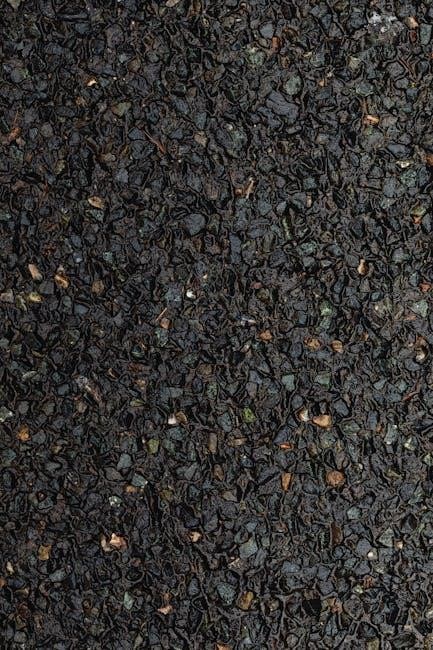
Types of Grit
3.3 Fine Grit (2000-4000)
Fine grit sharpening stones refine edges to a polished finish‚ ideal for maintaining sharpness without removing excessive material. They prepare blades for extra-fine grit polishing.
3.1 Coarse Grit (100-400)
Coarse grit sharpening stones (100-400) are designed for heavy-duty sharpening and repairing damaged or dull edges. They quickly remove metal‚ restoring a blade’s shape and edge geometry. Ideal for rough sharpening‚ they are the first step in the sharpening process‚ preparing the edge for finer grits. Coarse grit stones are essential for tools with significant wear or nicks. Regular cleaning and drying ensure their effectiveness and longevity‚ making them a cornerstone in any sharpening toolkit.
3.2 Medium Grit (600-1200)
Medium grit sharpening stones (600-1200) are used to refine and smooth edges after coarse grit sharpening. They remove smaller imperfections‚ creating a sharper‚ more polished edge. Ideal for general sharpening‚ medium grit stones strike a balance between cutting efficiency and edge refinement. They are suitable for maintaining tools like chisels‚ knives‚ and axes. Regular use of medium grit stones ensures consistent results and prepares the edge for finer grit sharpening. Proper cleaning and drying maintain their effectiveness over time.
Fine grit sharpening stones (2000-4000) are designed for refining and polishing edges to a high level of sharpness. They remove minor imperfections and create a smooth‚ razor-sharp edge. Ideal for finishing touches‚ fine grit stones are often used on knives‚ razors‚ and precision tools. They enhance edge geometry and reduce micro-scratches. Regular use of fine grit stones ensures a professional-grade finish. Proper maintenance‚ including cleaning and drying‚ is essential to preserve their effectiveness and longevity.
3.4 Extra-Fine Grit (6000-8000)
Extra-fine grit sharpening stones (6000-8000) are used for polishing and achieving a mirror-like finish on edges. They refine the edge to its sharpest state‚ removing microscopic scratches. This grit is ideal for high-carbon steel tools‚ knives‚ and razors‚ ensuring exceptional sharpness and durability. Extra-fine grit stones are the final step in sharpening‚ providing a professional-grade finish. Regular cleaning and maintenance are crucial to preserve their effectiveness. They enhance tool performance and are essential for users seeking precision and longevity in their cutting implements.

Choosing the Right Grit Progression
Selecting the proper grit progression ensures efficient sharpening. Start with coarse grit for damaged edges‚ progress to medium for refining‚ and finish with fine or extra-fine for polish.
4.1 Starting with Coarse Grit
Coarse grit (100-400) is ideal for addressing damaged or extremely dull edges. It quickly removes metal‚ restoring the edge’s shape. Start by soaking the stone‚ then hold the tool at the correct angle and move it back and forth. This step focuses on re-establishing the edge rather than polishing. Coarse grit is essential for tools with chipped or worn-out blades‚ as it lays the foundation for further refinement. Regular use ensures efficient sharpening and extends tool longevity.
4.2 Moving to Medium Grit
After coarse grit‚ medium grit (600-1200) refines the edge‚ smoothing out the metal. This step removes smaller imperfections and sharpens the tool further. Soak the stone‚ maintain the correct angle‚ and use consistent‚ light strokes. Medium grit strikes a balance between sharpening and polishing‚ preparing the edge for finer grits. It is ideal for general sharpening tasks and ensures the blade becomes sharper and more defined. Regular use of medium grit helps maintain tools in excellent working condition‚ ready for finer refinement.
4.3 Refining with Fine Grit
Fine grit (2000-4000) is used to refine and polish the edge‚ creating a sharper‚ more defined blade. After medium grit‚ fine grit removes minor scratches and smooths the metal. Soak the stone if necessary‚ then maintain consistent‚ light strokes at the correct angle. Fine grit enhances the blade’s sharpness and prepares it for extra-fine polishing. Regular use ensures a polished‚ durable edge‚ ideal for tools requiring precision cutting. Fine grit is essential for achieving professional-level sharpness in woodworking‚ cooking‚ and other applications.
4.4 Polishing with Extra-Fine Grit
Extra-fine grit (6000-8000) is used for polishing and creating a razor-sharp‚ high-luster edge. This step is optional but ideal for tools requiring extreme sharpness. Soak the stone in water before use‚ then apply light‚ controlled strokes at the correct angle. Extra-fine grit removes microscopic imperfections‚ leaving a smooth‚ polished finish. It enhances edge retention and ensures a professional-level sharpness. This final step is perfect for chef knives‚ precision instruments‚ and tools needing a refined edge. Polishing with extra-fine grit elevates the tool’s performance and longevity.
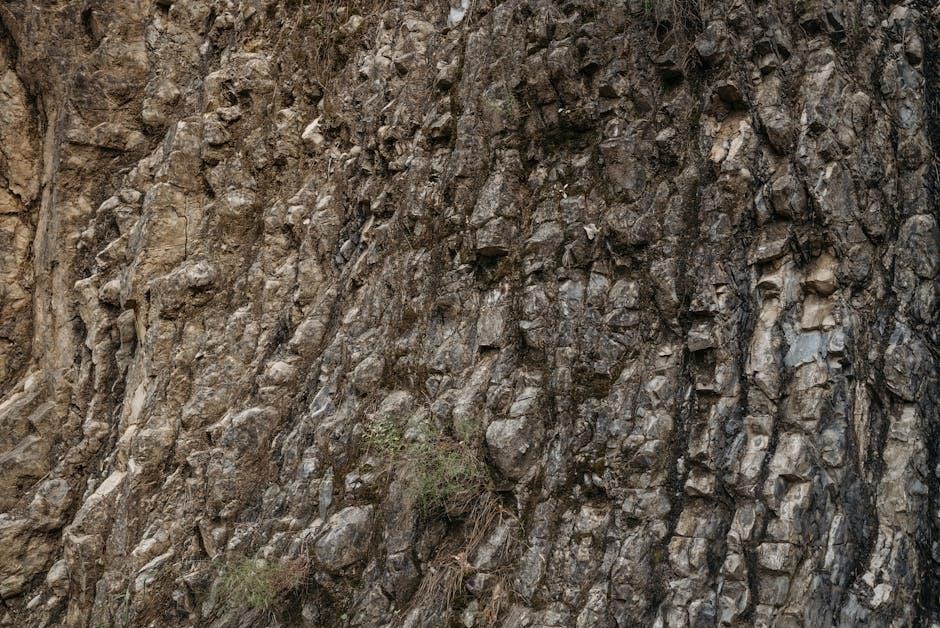
Applications of Different Grits
Different grits are used for specific sharpening tasks‚ from coarse grinding to fine polishing‚ ensuring precise edge refinement and optimal tool performance across various applications.
5.1 Coarse Grit for Damaged or Dull Edges
Coarse grit sharpening stones are ideal for repairing damaged or dull edges. They quickly remove metal‚ restoring the edge’s shape and preparing it for finer sharpening stages. This grit is essential for tools with significant wear or nicks‚ as it efficiently reshapes the blade. Regular use of coarse grit ensures tools remain functional and extends their lifespan by addressing issues before they worsen. It’s a foundational step in any sharpening process‚ laying the groundwork for smoother finishes with higher grit stones.
5.2 Medium Grit for General Sharpening
Medium grit sharpening stones are versatile and ideal for general sharpening tasks. They refine edges by removing smaller imperfections and sharpening the blade further. This grit is often used after coarse grit to prepare the edge for finer sharpening. It’s effective for maintaining tools that are already in decent condition but need a touch-up. Medium grit strikes a balance between sharpening efficiency and edge refinement‚ making it a go-to choice for everyday maintenance and sharpening needs.
5.3 Fine Grit for Refining the Edge
Fine grit sharpening stones are used to refine the edge‚ removing minor imperfections and creating a polished finish. This grit is essential for tools requiring sharpness and smoothness. After medium grit‚ fine grit further sharpens and aligns the edge‚ enhancing precision and performance. It’s ideal for tools like knives and chisels‚ where edge retention and cleanliness are critical. Consistent‚ light pressure ensures a refined edge‚ making fine grit a crucial step in achieving professional-grade sharpness and durability.
5.4 Extra-Fine Grit for Polishing
Extra-fine grit sharpening stones are designed for polishing and creating a mirror-like finish on edges. This grit is ideal for final touches‚ enhancing the sharpness and aesthetics of blades or tools. It removes microscopic imperfections‚ leaving the edge smooth and refined. Often used for high-end knives or precision instruments‚ extra-fine grit ensures superior edge geometry and longevity. While not necessary for everyday tools‚ it adds a professional-grade finish. Use light pressure and consistent strokes to avoid over-polishing‚ which can dull the edge. Water or oil stones are recommended for this step.
Maintaining Your Sharpening Stones
Regular maintenance ensures sharpening stones remain effective. Clean thoroughly after use‚ store in a dry place‚ and avoid contamination from debris or excess oil.
6.1 Cleaning the Sharpening Stone
Cleaning your sharpening stone is essential for maintaining its effectiveness. For water stones‚ rinse thoroughly with clean water after use. For oil stones‚ use a mild solvent or oil to wipe away metal particles. Avoid harsh chemicals‚ as they can damage the stone. Gently scrub the surface with a soft brush or cloth to remove residue. Regular cleaning prevents the buildup of debris‚ ensuring optimal sharpening performance. Proper care extends the life of your sharpening stone and maintains its grit efficiency.
6.2 Storing the Sharpening Stone
Proper storage is crucial to maintain the sharpening stone’s effectiveness. After cleaning and drying‚ store the stone in a dry‚ cool place away from direct sunlight. Use a protective case or wrap it in a cloth to prevent damage. Avoid stacking tools on top of the stone‚ as this can cause scratches or uneven wear. For water stones‚ ensure they are completely dry before storage to prevent mold or mineral buildup. Regularly inspect the stone for damage and maintain its flatness to ensure consistent sharpening results.
6.3 Drying the Sharpening Stone
Drying the sharpening stone is essential to prevent damage and maintain its effectiveness. After use‚ allow the stone to air dry completely‚ avoiding direct heat sources like heaters or ovens. For water stones‚ ensure all moisture has evaporated to prevent mold or mineral buildup. Oil stones require less maintenance but should still be wiped clean and left to air dry. Proper drying ensures the stone remains flat and ready for future use‚ preserving its grit and sharpening capabilities over time.
Using Sharpening Stones Effectively
Sharpening stones work best with consistent technique and proper angle maintenance. Using water or oil enhances grit effectiveness‚ ensuring precise edge refinement and longevity of the stone.
7.1 Proper Technique for Sharpening
Proper sharpening technique involves maintaining a consistent angle and applying even pressure. Start by placing the blade on the stone‚ aligning it with the desired edge angle. Use light‚ controlled strokes‚ moving the blade from heel to tip. Repeat this process‚ flipping the blade periodically to ensure even sharpening. Keep the stone lubricated with water or oil to prevent overheating and improve grit effectiveness. Regularly check the edge’s progress with a magnifying glass or thumbnail test to achieve the perfect sharpness.
7.2 Angle Maintenance
Maintaining the correct angle is crucial for effective sharpening. Most tools require a specific angle range‚ typically between 20° and 30°‚ depending on their use. To achieve this‚ place the blade on the stone and align it visually or using a honing guide. Apply consistent pressure and move the blade in smooth‚ even strokes. Periodically inspect the edge to ensure the angle remains consistent. Adjusting the angle mid-process can lead to uneven sharpening‚ so focus on maintaining stability throughout the sharpening process for optimal results.
7.3 Using Water or Oil
Using water or oil with sharpening stones is essential for optimal results. Water or oil acts as a lubricant‚ preventing the stone from overheating and ensuring smooth sharpening. Apply a small amount of water or oil to the stone before starting. This helps the grit particles cut more effectively and prevents the edge from becoming too hot‚ which can damage the tool. For water stones‚ soaking them beforehand is recommended‚ while oil stones require a light application. Proper lubrication enhances the sharpening process and maintains the stone’s efficiency.
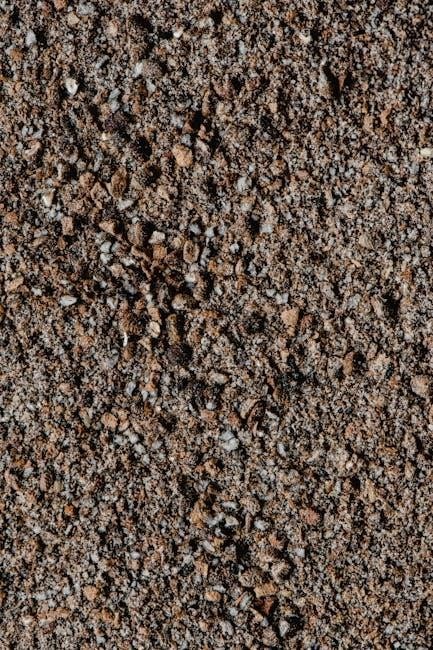
Common Mistakes to Avoid
Avoid using excessive water‚ as it can reduce the stone’s effectiveness. Insufficient pressure may lead to uneven sharpening. Neglecting stone maintenance also hinders optimal results.
8.1 Using Too Much Water
Using excessive water can dilute the sharpening stone’s abrasive particles‚ reducing its effectiveness. This leads to slower sharpening and may cause the stone to wear unevenly. Proper hydration is key; the stone should be damp‚ not soaked. Excess water can also make the process messier and less controlled‚ potentially damaging the tool’s edge. Maintaining the right balance ensures optimal sharpening results and prolongs the stone’s life. Always use water sparingly and evenly for best outcomes.
8.2 Insufficient Pressure
Applying too little pressure during sharpening can lead to ineffective edge refinement. The abrasive particles on the stone won’t engage properly with the tool’s surface‚ resulting in a dull or uneven edge. Consistent‚ moderate pressure is essential for removing metal and achieving a sharp edge. Excessive pressure‚ however‚ can damage the tool or stone. Finding the right balance ensures efficient sharpening without compromising the tool’s integrity or the stone’s durability. Proper pressure application is a key skill to master for successful sharpening.
8.3 Not Maintaining the Stone
Neglecting to clean and maintain sharpening stones can significantly reduce their effectiveness. Metal particles and debris can clog the stone’s surface‚ preventing proper contact with the tool. This leads to uneven sharpening and poor results. Regular cleaning with water or solvent is essential to remove residue. Proper storage in a dry place also prevents damage. A well-maintained stone ensures consistent sharpening performance and extends its lifespan. Neglecting these steps can render the stone ineffective‚ making the sharpening process frustrating and inefficient. Regular upkeep is crucial for optimal results.

Sharpening Stones vs. Other Tools
Sharpening stones offer precise control and versatility compared to electric sharpeners or steel‚ making them ideal for both novice and expert users seeking consistent results. They remain unmatched for fine-tuning edges‚ providing a traditional yet effective method that maintains tool integrity. Unlike diamond stones‚ they require minimal maintenance and are cost-effective‚ making them a preferred choice for many professionals. Their durability and adaptability ensure they remain a cornerstone in sharpening arsenals‚ though they do demand skill and patience to master. Balancing tradition with efficiency‚ sharpening stones stand out as indispensable tools in various workshops and kitchens. They are favored for their ability to hone edges to razor-sharp perfection without damaging the tool‚ a quality that modern alternatives often struggle to replicate. While other tools may offer speed‚ stones provide unmatched precision‚ making them essential for those who value craftsmanship and durability.
9.1 Sharpening Stones vs. Steel
Sharpening stones and steel serve different purposes in edge maintenance. Stones are used for sharpening and refining‚ while steel hones and aligns edges. Stones require proper cleaning and maintenance to ensure effectiveness‚ whereas steel is relatively low-maintenance. Stones are cost-effective and offer versatility in grit selection‚ making them ideal for precise sharpening. Steel‚ however‚ is excellent for quick touch-ups and maintaining edge alignment. Both tools complement each other‚ with stones providing the foundation for sharpness and steel refining the edge for optimal performance. Together‚ they ensure tools remain in peak condition for various tasks.
9.2 Sharpening Stones vs. Diamond Stones
Sharpening stones and diamond stones differ in material and performance. Diamond stones‚ coated with industrial diamonds‚ are more durable and sharpen faster‚ making them ideal for heavy use. Sharpening stones‚ made from natural or synthetic materials‚ offer a more traditional approach with precise grit control. Diamond stones are less prone to wear and require minimal maintenance‚ while sharpening stones need regular cleaning and flattening. Diamond stones are costlier but last longer‚ whereas sharpening stones are more affordable and versatile for various grit applications. Each serves distinct needs based on user preference and tool requirements.
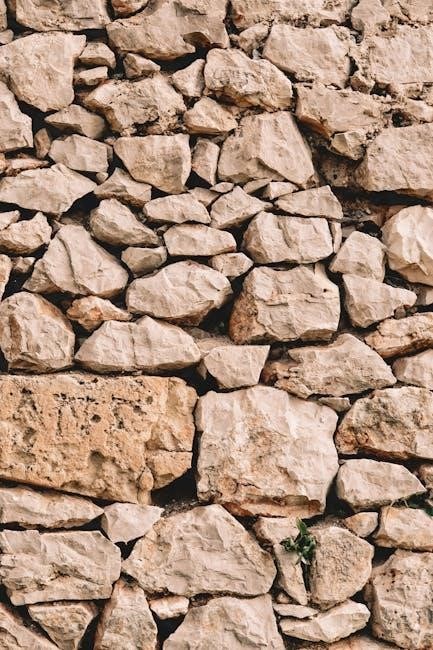
Safety Tips
Always wear protective gloves and eyewear when sharpening. Keep loose clothing tied back and long hair secured. Ensure your work surface is stable and clear of distractions.
10.1 Handling Sharp Objects
When handling sharp objects‚ always maintain a firm grip and keep fingers away from the cutting edge. Use protective gloves to prevent accidental cuts. Ensure the work area is well-lit and free from clutter. Never sharpen or handle sharp tools near children or pets. Keep your attention focused on the task to avoid distractions. Proper handling reduces the risk of injury and ensures safer sharpening sessions. Always store sharp tools securely when not in use.
10.2 Protecting the Work Area
Protecting your work area is crucial to prevent damage and ensure safety. Use a plastic or rubber mat to cover your workspace‚ shielding it from potential scratches or spills. Keep tools and sharpening stones in a toolbox or hard case when not in use to avoid accidents. Ensure the area is well-ventilated and free from flammable materials. A clean‚ organized workspace reduces risks and enhances sharpening efficiency. Always store sharpening supplies securely to maintain a safe environment for both work and storage.

Advanced Sharpening Techniques
Advanced methods include micro-beveling and edge geometry refinement‚ enhancing sharpness and consistency. These techniques require precise angle control and a deep understanding of grit progression for optimal results.
11.1 Micro-Beveling
Micro-beveling is an advanced technique that involves creating a small‚ secondary bevel at the edge of a tool for enhanced sharpness. This method is particularly useful for maintaining consistency across different grits‚ as it allows for precise control over the angle and edge geometry. By refining the micro-bevel‚ users can achieve a razor-sharp edge that retains its durability. Proper execution requires a deep understanding of grit progression and angle maintenance‚ making it a skill that elevates sharpening to an art form. Consistent practice ensures optimal results.
11.2 Edge Geometry
Edge geometry refers to the precise shape and angle of a tool’s cutting edge‚ critical for its performance. Different tools require specific geometries‚ such as straight‚ convex‚ or chamfered edges‚ to optimize their functionality. Achieving the correct geometry involves shaping the edge through a series of sharpening steps‚ starting with coarse grits to establish the primary angle and progressing to finer grits for refinement. Proper edge geometry enhances durability‚ cutting efficiency‚ and overall tool effectiveness‚ making it a cornerstone of advanced sharpening techniques. Mastery of edge geometry ensures tools perform at their highest potential.
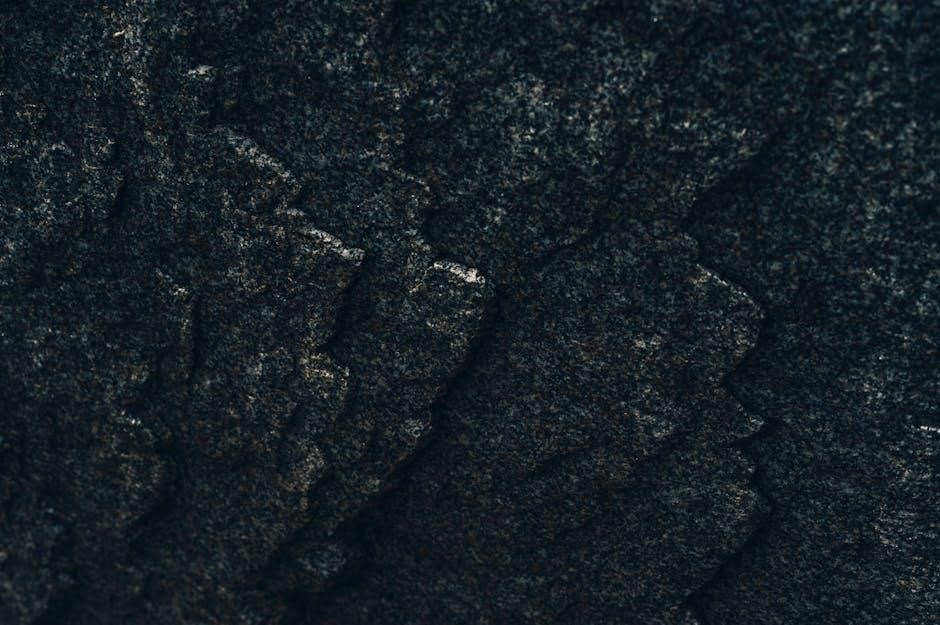
The Future of Sharpening Stones
Future sharpening stones may incorporate advanced materials like nanomaterials or smart ceramics for improved efficiency. Innovations in grit technology will enhance sharpening precision and sustainability.
12.1 Innovations in Grit Technology
Innovations in grit technology are revolutionizing sharpening stones‚ with advancements in material science leading to more durable and precise grit compositions. Researchers are exploring nanomaterials and smart ceramics to create stones that maintain consistent grit throughout the sharpening process. Additionally‚ eco-friendly grit options are being developed‚ focusing on sustainability without compromising performance. These innovations aim to enhance sharpening efficiency‚ ensuring sharper edges with less effort and longer-lasting tools. Future grit technologies will likely integrate with other sharpening tools‚ creating a more seamless and effective sharpening experience for users.
12.2 Sustainability in Sharpening
Sustainability in sharpening focuses on eco-friendly practices and materials. Many modern sharpening stones are now made from recycled materials‚ reducing environmental impact. Manufacturers are also developing longer-lasting stones‚ minimizing waste and the need for frequent replacements. Additionally‚ sustainable sharpening techniques emphasize water-based or oil-free methods‚ reducing chemical use. The industry is shifting toward greener production processes‚ ensuring that sharpening tools remain effective while promoting environmental responsibility. These sustainable approaches align with global efforts to reduce waste and conserve resources‚ making sharpening more eco-conscious.
Sharpening stones are indispensable for maintaining tool edges. Proper grit selection and technique ensure optimal results. Regular maintenance and sustainable practices enhance their longevity and effectiveness‚ making them a vital tool for any workshop or craft.
13.1 Summary of Key Points
Sharpening stones are vital for refining tool edges‚ with grit progression guiding from coarse to extra-fine. Proper technique‚ angle maintenance‚ and stone care ensure optimal results. Coarse grits repair damaged edges‚ medium grits refine‚ and fine grits polish. Avoiding common mistakes like excessive water use and insufficient pressure is crucial. Regular maintenance and sustainable practices enhance longevity. Advanced techniques like micro-beveling and edge geometry further refine sharpening. Balancing sharpness and durability is key‚ making sharpening stones an indispensable tool for precision and craftsmanship in woodworking and beyond.
13.2 Final Thoughts on Sharpening Stones
Mastery of sharpening stones requires understanding grit progression‚ proper technique‚ and consistent maintenance. From coarse to extra-fine grits‚ these tools offer precision and versatility. Regular care ensures longevity‚ while innovations in materials and sustainability promise a bright future. Whether for woodworking or everyday use‚ sharpening stones remain indispensable for achieving razor-sharp edges and extending tool life. Balancing sharpness and durability‚ they are a cornerstone of craftsmanship‚ offering unparalleled results for those willing to invest time and effort into their use.
